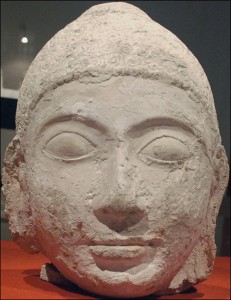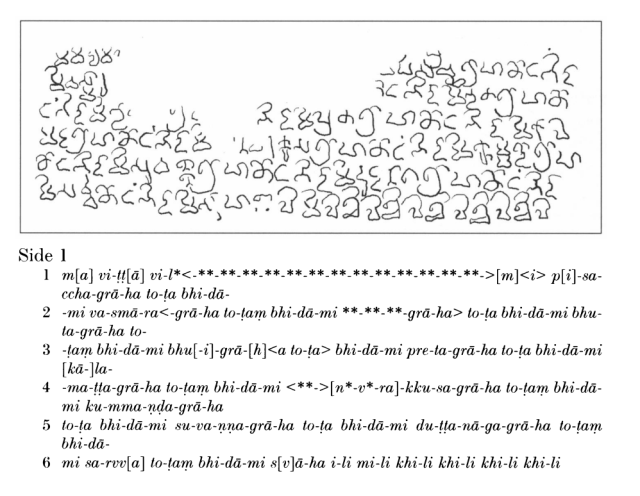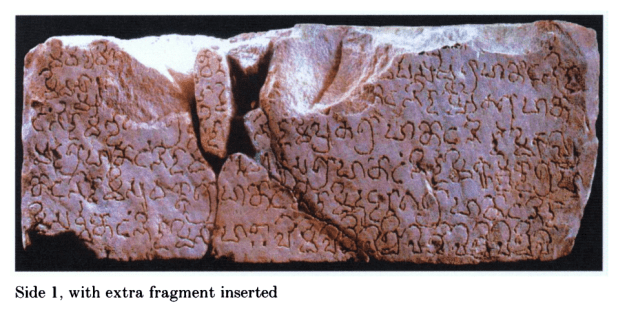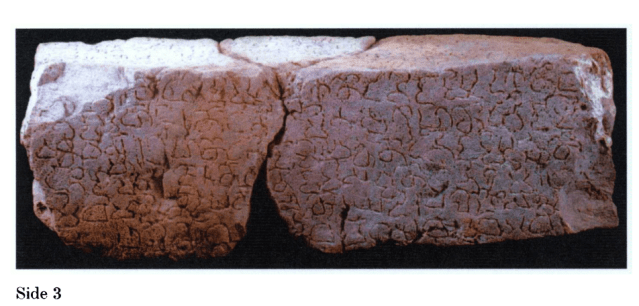The Maldives are not a country we typically associate with Buddhism. Currently, it is primarily known to the West as a culturally denuded vacation dystopia/utopia catering to the cosmopolitan elite, though in reality, it also exists alongside a somewhat extremist Islamic state. A double whammy to ensure the cultural irrelevance of anything preceding even early modernity.
The paucity of the noticeable historical impact of Buddhism vis a vis Islam in the Maldives is actually one of the most severe I’ve ever studied, of any formerly Buddhist society. Typically those who mourn over the loss of such cultural zones reference Afghanistan, perhaps northern India, Bactria, Indonesia or elsewhere in Central Asia, or Southest Asia. But the elimination of Buddhism (and Hinduism for that matter) in the Maldives is shockingly total, not only in terms of population but also in terms of archeological evidence and even historical memory. This really is not something I’m making up. In the words of Hassan Ahmed Maniku (from CONVERSION OF MALDIVES TO ISLAM, Journal of the Royal Asiatic Society Sri Lanka Branch , 1986/87, New Series, Vol. 31 (1986/87), pp. 72-81):
Unlike any other country, when Maldives accepted Islam it was a complete acceptance. No trace of any other religion was left. Vestiges of whatever form of worship that existed prior to such acceptance was completely erased from view.
Whatever scraps escaped this storm are still under threat up until modernity. In 1959 the below pictured Buddhist statue was discovered in an excavation. It had clearly been intentionally buried to escape the wave of destruction that swept over the Maldives in the immediate aftermath of its conversion to Islam.

Almost immediately upon discovery, the statue’s head was smashed off, and most of the brittle torso was reduced to fragments. Below is the remaining head in the National Museum, after undergoing some restoration. Though given what happened in 2012 (see below) I am unsure of its current fate.

In 2012 a rare collection of coral Buddha statues in the National Museum at Malé were destroyed.
Ali Waheed, the director of the National Museum, which was built by China as a gift to the country, said on Monday that officials might be able to restore two or three of the damaged statues, but that the rest were beyond repair. “The collection was totally, totally smashed,” Mr. Waheed said. “The whole pre-Islamic history is gone.”
…
Naseema Mohamed, a historian who retired from the museum last year, said the loss was particularly devastating because many of the country’s ancient artifacts, dispersed across the archipelago, had been lost or destroyed over the years by local people and rulers. “There was very little left,” she said.
The Council on Foreign Relations reports that a few Hindu statues met the same fate:
On February 17, 2012, a group of Islamist radicals vandalized archaeological artifacts that were mostly ancient Hindu and Buddhist relics, including a sixth century Buddhist statue at a museum in Malé. An estimated 25 exhibits, including Boho mala sculptures and statues of Hanuman and the water god, Makara, were damaged in an apparent attempt to destroy the sole testimony of the Maldives’ pre-Islamic civilization.
Image and captions from Tamilnet:
The destroyed images had inscriptions in the old Maldivian script called Eveylaa Akuru. Most of these inscriptions were neither deciphered nor published. [Courtesy: National Museum, Maldives]
To be fair, the Maldives are on the extreme periphery of the Indian subcontinent and are along a main trade corridor with Arabia. Even without the presence of a hostile invasion fleet, the typical center-periphery dynamics, and the hostility between the Maldives and the Indian coastal polities make it intuitive that the Maldives would convert to Islam eventually. But nevertheless, from the point of initial conversion (in 1147-1153), the zealous fashion in with forced conversions and destruction of Buddhist, Hindu, and/or “pagan” places of worship, has led to the extreme paucity of evidence we have available today.
However, aside from some shattered statues, there are some scraps that remain. The one which I want to present to you today is of particular interest because it is a textual fragment that bears similarity to other texts within the Hindu/Buddhist corpus, and thus can provide some insight into the pre-Islamic dynamics of textual/religious transmission in the Indian Ocean. From Jost Gippert, A Glimpse into the Buddhist Past of the Maldives I. An Early Prakrit Inscription, Wiener Zeitschrift für die Kunde Südasiens / Vienna Journal of South Asian Studies , 2004, Vol. 48 (2004), pp. 81-109) :
The beginning of literacy has for long been identical with the conversion of the country to Islam in the middle of the 12th Century of our era. As a matter of fact, the Maldives have borne witness to a continuons production of written texts since about 1192 A.D. when the oldest copper plate grants that have come down to us were issued by Maldivian kings. Both by their outer appearance and by their linguistic content, however, these documents clearly suggest that the tradition of literacy must have been much older, dating back to times when Buddhism was still prévalent in the islands.
…
it is generally assumed that they date back to the tenth-eleventh centuries, thus representing the only remnants of Buddhist literacy which was otherwise deliberately destroyed by the Islamic convertors.
This was apparently a Vajrayana, or at least a tantric culture, the earliest stone inscription evidence of which constitutes a scarce set of Prakrit inscriptions post-dating but paralleling those of 6-8th century South Indian Brahmi script of a very early variety, prior to its more exceptionally curvilinear developments precipitated by the adoption of palm leaf writing in later centuries. As with so many Maldivan artifacts, these are unique insofar as they are inscribed on coral slabs:








In terms of meaning, this is essentially a dharani (something like an incantation, a chant, or a talismanic spell) in this case a tantric dharani seemingly intended to act as a form of protection and to combat the influence of various malevolent entities or forces. The list of entities it mentions, and the pattern of the text closely resemble those of later recensions of the Lankavatara Sutra, and the Sitatapatra Dharini. This, combined with various particularities about the script and spelling indicates that whoever constructed this was part of a coherent Prakrit/Sanskrit using Vajrayana or at least tantric tradition which spanned essentially the entire Buddhist world at that time, though the use of Sanskritized Prakrit here, and the occurrence of a few unique textual and linguistic features indicates again the peripheral position of the Maldives relative to the rest of that tradition, though the other closest node was probably Sri Lanka.
I smash the possession caused by prêtas, into pieces.
I smash the possession caused by akâlamrtyus into pieces
I smash the possession caused by ??? râksasas into pieces.
I smash the possession caused by kumbhândas into pieces.
I smash the possession caused by suparna(s) into pieces.
I smash the possession caused by wicked nâgas into pieces.
I smash all (of them) into pieces.
Hail!
Hail!
I smash the 80,000 sravanas into pieces.
I smash the 90,000 mulikas into pieces.
I smash the 66,000 cyuta-karmas into pieces.
I smash the 100,000 earthquakes into pieces.
I smash all (of them) into pieces.
I smash the arthikas (?) into pieces.
I smash (???) into pieces.
I smash the (poison) swallowed (?) into pieces.
I smash (other) poison (?) into pieces.
I smash Garuda (?) into pieces.
I smash (??) into pieces.
I smash (??) into pieces.
I smash the (punishment by the) stick [i.e. coercive authority] into pieces.
I smash ??? into pieces.
I smash the possession caused by it (?) into pieces.
I smash the possession caused by vanca-apasmaras (?) into pieces.
I smash ??? into pieces.
I smash ??? into pieces.
I smash ??? into pieces.
I smash all (of them) into pieces.
I (???) destroy (?);
Smash into pieces, into pieces (?),
Smash into pieces, destroy (?),
???
???
I make ???
???
cut (and smash) all of them,
Hail!
Honestly, the predicted meaning of this text is probably a lot less fragmentary than it might seem since we can compare it with other similar texts throughout the Buddhist world to fill in some of the blanks, but I’m leaving it as it is so you can get a sense of the difficulty in interpreting an object like this.
An invigorating and impassioned dharani to be sure, but isn’t there a sad and inescapable irony that these verses discuss “smashing into pieces” so much, and yet this is exactly the fate of the cultural complex which produced them? Driving the knife even deeper, isn’t it darkly poetic that one of the few scraps of textual evidence we have of this culture is a series of protection verses?
